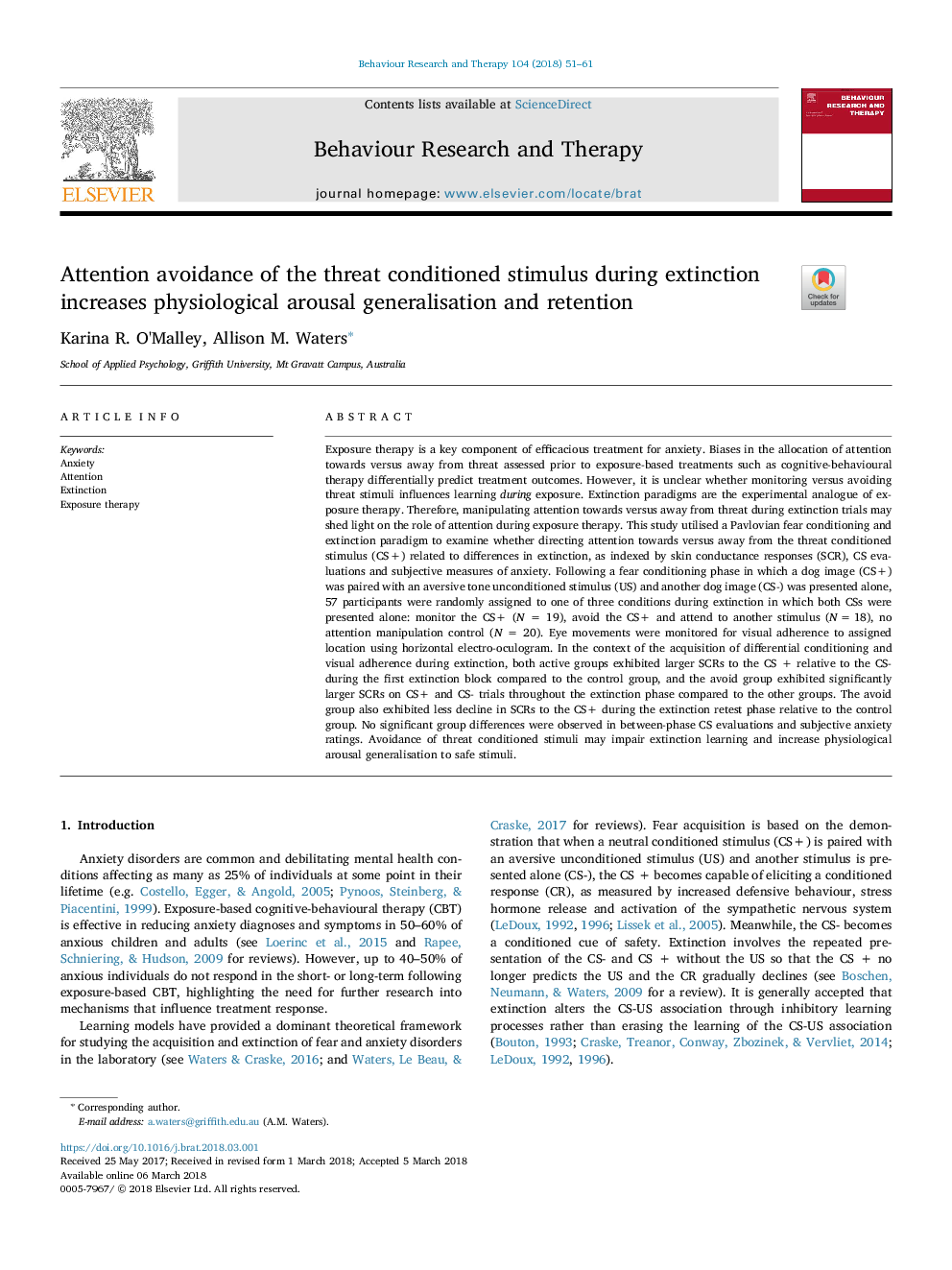ترجمه فارسی عنوان مقاله
اجتناب از توجه به محرک های محرک تهدید در طول انقراض باعث افزایش تعمیم و نشاط عصبی فیزیولوژیک می شود
عنوان انگلیسی
Attention avoidance of the threat conditioned stimulus during extinction increases physiological arousal generalisation and retention
| کد مقاله | سال انتشار | تعداد صفحات مقاله انگلیسی |
|---|---|---|
| 118303 | 2018 | 11 صفحه PDF |
منبع

Publisher : Elsevier - Science Direct (الزویر - ساینس دایرکت)
Journal : Behaviour Research and Therapy, Volume 104, May 2018, Pages 51-61
ترجمه کلمات کلیدی
اضطراب، توجه انقراض، درمان در معرض،
کلمات کلیدی انگلیسی
Anxiety; Attention; Extinction; Exposure therapy;

